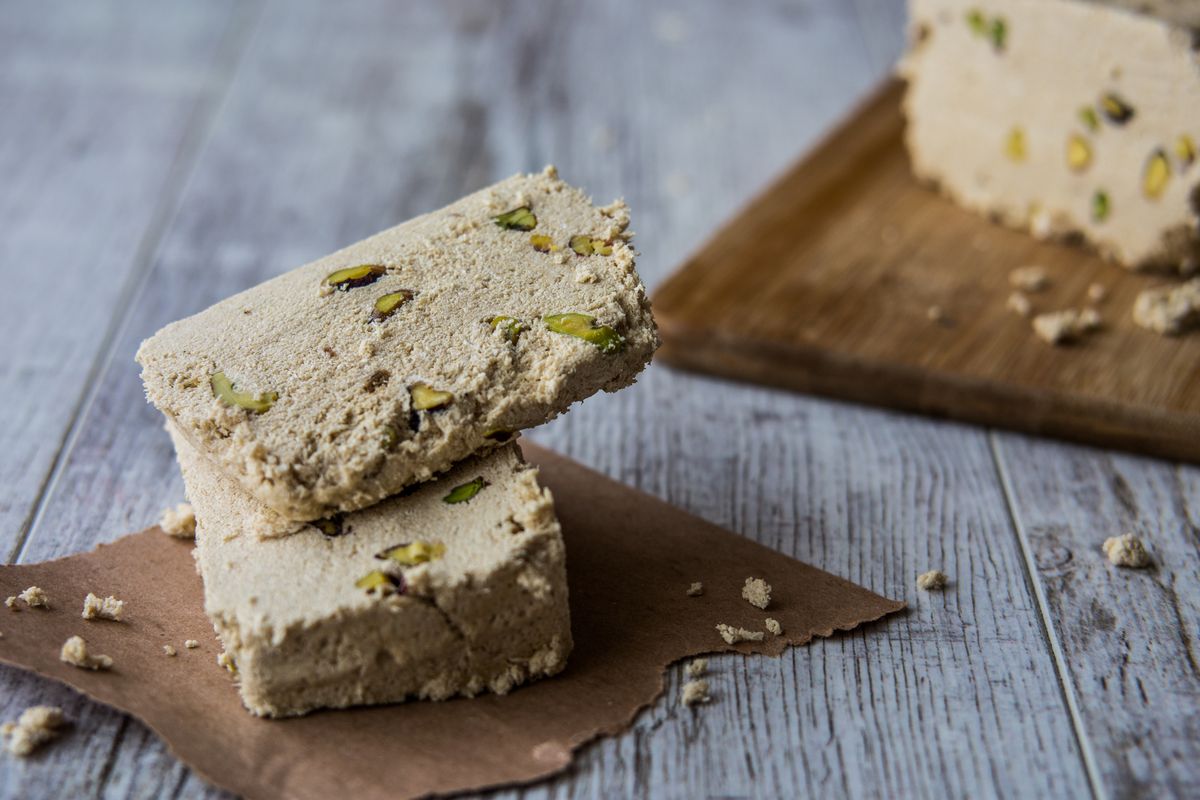Recipes
Let’s prepare halva, a traditional Mediterranean dessert!


Halva is a very sugary, tahini-based dessert similar to soft nougat. Here's how to prepare it and some simple variations!
Halva is a dessert that originates in the Middle East and is especially popular in the Mediterranean basin. All the countries that have some access to our sea know it, they have very similar versions and names equally close to each other. The ingredients of halva are easily available, the most complex and on which the entire dessert is based is tahini , a sesame seed sauce which is very widespread in the Middle East for the preparation of hummus, for example.
Let's see together how to prepare this traditional dessert at home , with a few simple steps!

Preparation of sweet halva
- The first step is also the most complex: you have to dissolve the water, sugar (preferably cane) and the juice of half a lemon in a saucepan, until you obtain the classic sugar syrup .
- Add the tahini to the still hot syrup and mix everything well, you will see that it will start to thicken already during this preparation phase.
- The simplest version does not include other ingredients, but traditionally it is now customary to add pistachios above all. Then add the shelled pistachios, whole or roughly chopped, and continue mixing.
- Pour the mixture into a container, pressing it well and let it cool.
- At this point, place it in the fridge covered with cling film for approximately 24/36 hours.
- Your pistachio halva is ready , to serve it cut it into slices and then don't forget to keep it at room temperature !
If you like the consistency, also try making nougat .
storage
Do not store this dessert in the fridge, but at room temperature in a special container with a lid. Halva is a very stable product, for this reason it will remain good for several days if kept in a dry place and away from sources of light or heat
Halva: history
Halva comes from the Arabic word helw , which simply means sweet . Its birth is lost in the history of the civilizations surrounding the Mediterranean and living in the Middle East, although it still seems to have Ottoman origins. In fact, many countries know very well what it is, even if they call it by different names : for example in Tunisia it is called halwa chamia and in Albania hallva .
In the eastern Mediterranean, such as Albania and Greece, there are two distinct types of halva : the more classic halva prepared with sesame seeds or tahini sauce, or the halva with beaten semolina flour or semolina which remains much more gelatinous . In Eastern European countries, particularly in Ukraine, halva made from sunflower seeds is very widespread.
Halva, variations and how to customize the dessert
Not everyone likes halva, the consistency is similar to that of soft nougat but, if you use too much sugar it becomes cloying and it is difficult to appreciate it as it deserves. It is certainly a good recipe for vegans as it is totally free of animal derivatives such as milk and eggs.
The basic ingredient remains tahini, a sesame seed sauce which in the East is used for many preparations, both sweet and savory such as hummus or in some soups.
There are many variations of halva, the most traditional is with the addition of pistachios , but cardamom seeds, all dried fruit, coconut, even chocolate can also be used and flavored with spices. There are even some savory variations, with pieces of carrots, potatoes or delicate pumpkin .
Riproduzione riservata © - WT











